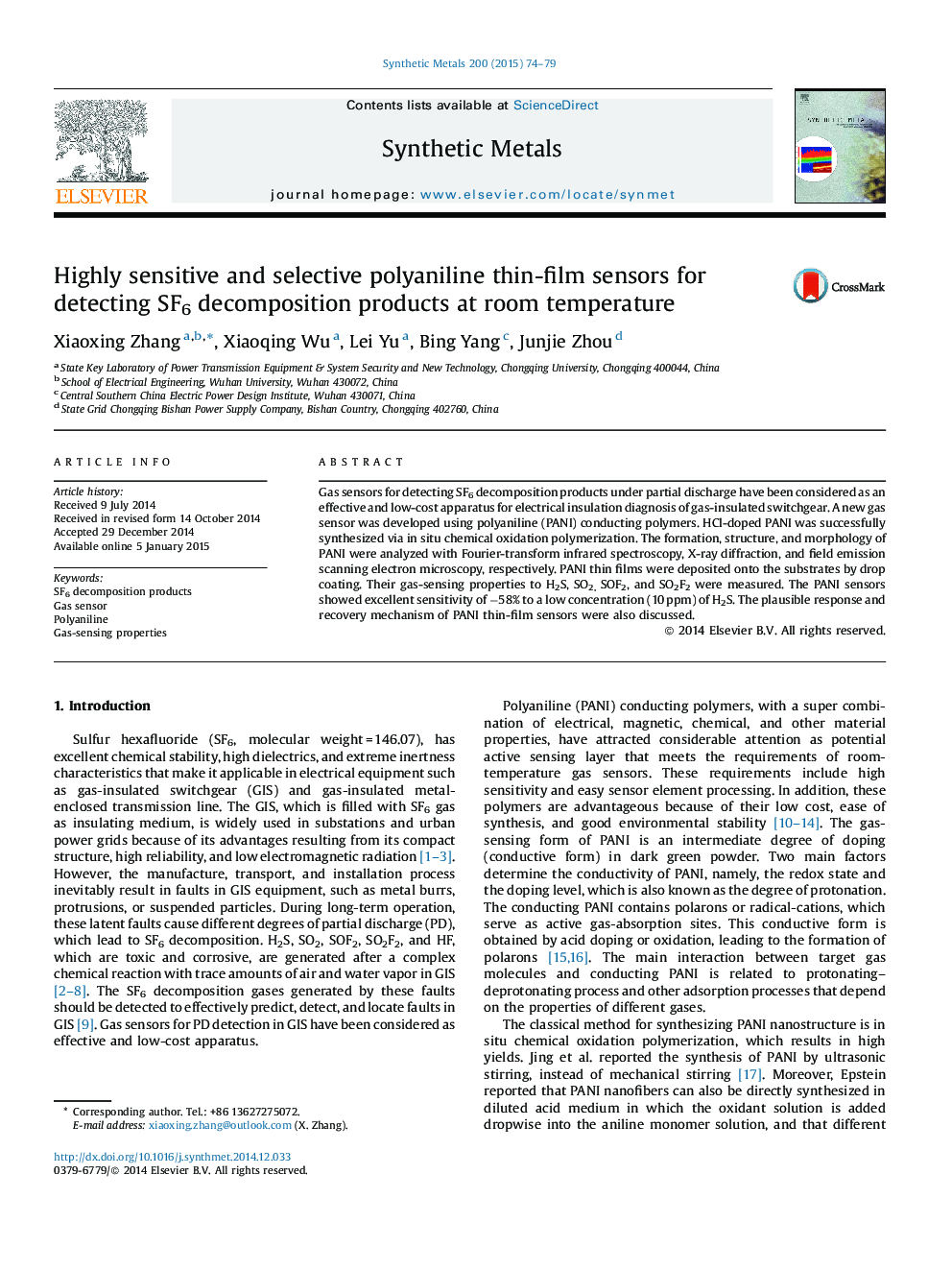| Article ID | Journal | Published Year | Pages | File Type |
|---|---|---|---|---|
| 1440647 | Synthetic Metals | 2015 | 6 Pages |
•PANI was first explored to detect SF6 decomposition products.•PANI thin film sensors show superior gas sensing characteristics.•Increasing concentration the sensor response will saturate.•The gas sensing mechanism relies on the species of gas.
Gas sensors for detecting SF6 decomposition products under partial discharge have been considered as an effective and low-cost apparatus for electrical insulation diagnosis of gas-insulated switchgear. A new gas sensor was developed using polyaniline (PANI) conducting polymers. HCl-doped PANI was successfully synthesized via in situ chemical oxidation polymerization. The formation, structure, and morphology of PANI were analyzed with Fourier-transform infrared spectroscopy, X-ray diffraction, and field emission scanning electron microscopy, respectively. PANI thin films were deposited onto the substrates by drop coating. Their gas-sensing properties to H2S, SO2, SOF2, and SO2F2 were measured. The PANI sensors showed excellent sensitivity of −58% to a low concentration (10 ppm) of H2S. The plausible response and recovery mechanism of PANI thin-film sensors were also discussed.
